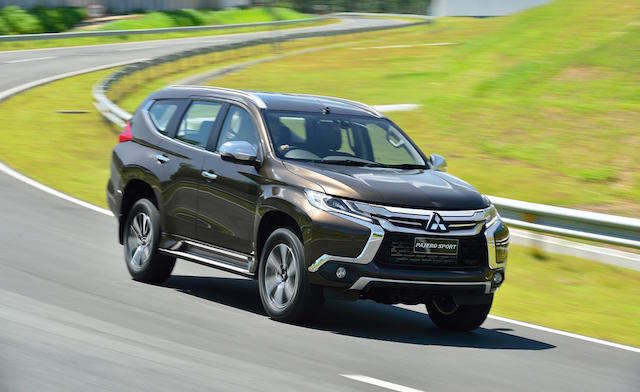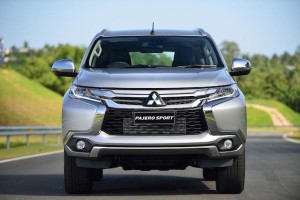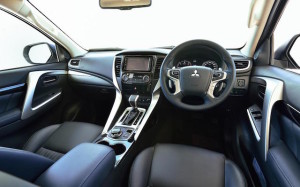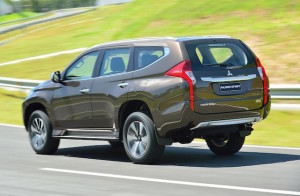
The new Pajero Sport will be “absolutely tailor-made for New Zealand” when it joins the carmaker’s line-up early next year, says Mitsubishi Motors NZ marketing manager Daniel Cook.
 The SUV was unveiled 48 hours ago in Thailand where it will be built alongside the new Triton ute. It effectively replaces the Mitsubishi Challenger in NZ. “Pajero Sport is much more refined than the Challenger – it’s more of a Pajero,” said Cook.
The SUV was unveiled 48 hours ago in Thailand where it will be built alongside the new Triton ute. It effectively replaces the Mitsubishi Challenger in NZ. “Pajero Sport is much more refined than the Challenger – it’s more of a Pajero,” said Cook.
The new model shares much with the Triton: its ladder chassis, many interior features, and exterior design cues front and rear from the GR-HEV prototype first seen at the Geneva motor show in 2012.
It also shares its 135kW/437Nm 2.4-litre turbodiesel with the Triton, only the engine will be remapped to mate with an eight-speed automatic transmission instead of the Triton’s five-speeder. The eight-speed is a first for Mitsubishi.
 The Japanese carmaker claims the new powertrain returns a 17 per cent improvement in fuel economy over the 2.5-litre diesel and five-speed auto in the previous Triton and outgoing Challenger.
The Japanese carmaker claims the new powertrain returns a 17 per cent improvement in fuel economy over the 2.5-litre diesel and five-speed auto in the previous Triton and outgoing Challenger.
Pajero Sport is 90mm longer (4785mm) and 35mm shorter (1805mm) in height than Challenger but shares the same width (1805mm) and 2800mm wheelbase.
Its Super-Select four-wheel-drive system works via a rotary dial – again like the Triton – but has been uprated with an off-road mode that lets the driver dial in Snow, Rocks, Gravel when needed. Whichever mode is selected shows up on the instrument panel.
 Ground clearance is now 218mm, up from the previous 205mm. “With its shared Pajero heritage and significant off-road advancements the Pajero Sport will have major appeal for Kiwi drivers”, says Cook.
Ground clearance is now 218mm, up from the previous 205mm. “With its shared Pajero heritage and significant off-road advancements the Pajero Sport will have major appeal for Kiwi drivers”, says Cook.
Mitsubishi has packed the SUV with active and passive safety features. Aside from seven airbags and the mandatory stability control, Pajero Sport can be had with hill descent control and a bunch of other electronic safety systems, including automatic braking.
It is expected to come in two models – one with more equipment than the other. Prices and specification levels will be known closer to the launch. Pajero Sport will sell alongside its big brother, the current 3.2-litre diesel Pajero.
It will compete directly with new rivals from Toyota and Ford, both based on utes. The Toyota Fortuner shares its chassis with the new Hilux and the Ford Everest shares its with the Ranger.
